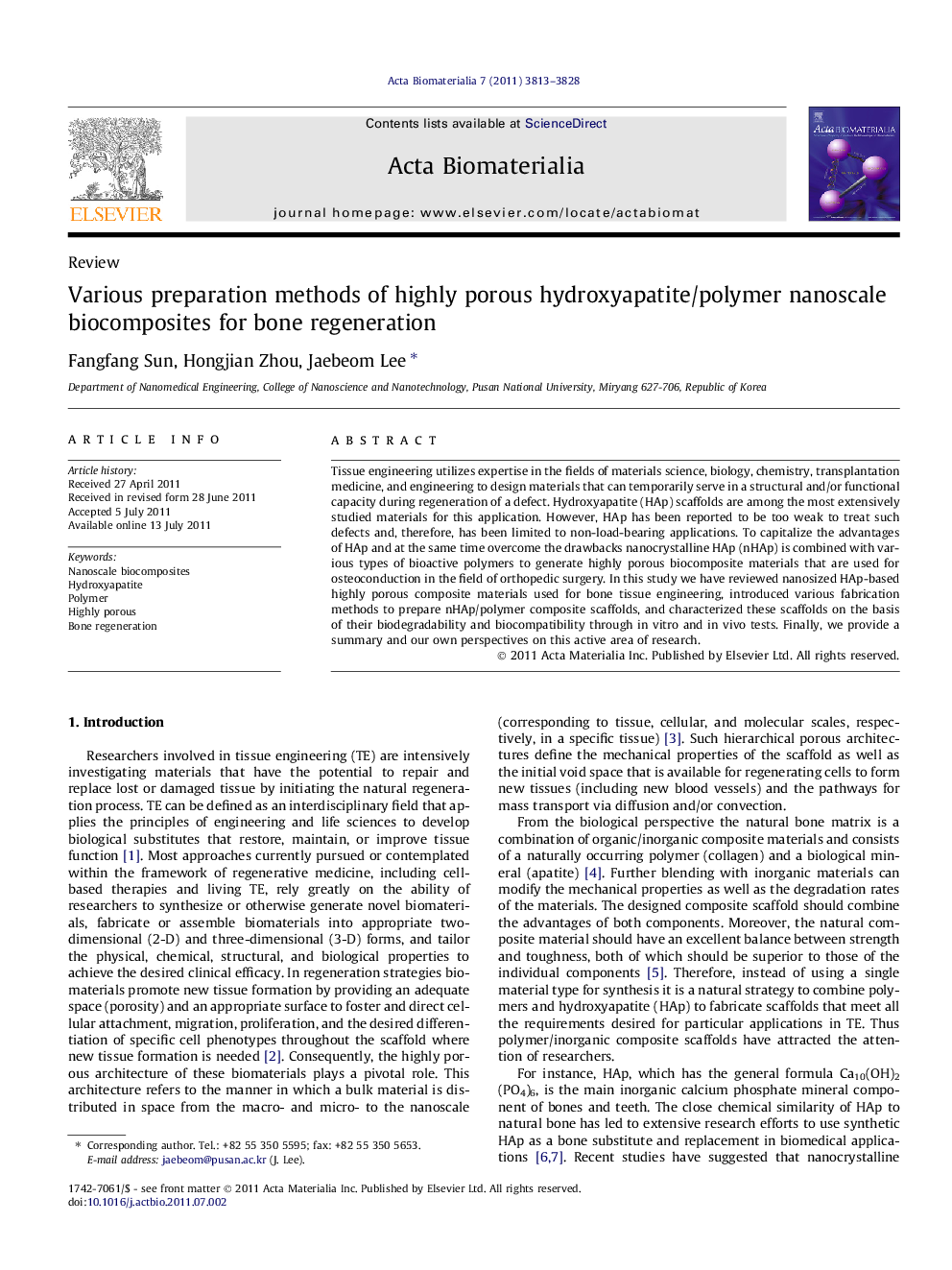| Article ID | Journal | Published Year | Pages | File Type |
|---|---|---|---|---|
| 1028 | Acta Biomaterialia | 2011 | 16 Pages |
Tissue engineering utilizes expertise in the fields of materials science, biology, chemistry, transplantation medicine, and engineering to design materials that can temporarily serve in a structural and/or functional capacity during regeneration of a defect. Hydroxyapatite (HAp) scaffolds are among the most extensively studied materials for this application. However, HAp has been reported to be too weak to treat such defects and, therefore, has been limited to non-load-bearing applications. To capitalize the advantages of HAp and at the same time overcome the drawbacks nanocrystalline HAp (nHAp) is combined with various types of bioactive polymers to generate highly porous biocomposite materials that are used for osteoconduction in the field of orthopedic surgery. In this study we have reviewed nanosized HAp-based highly porous composite materials used for bone tissue engineering, introduced various fabrication methods to prepare nHAp/polymer composite scaffolds, and characterized these scaffolds on the basis of their biodegradability and biocompatibility through in vitro and in vivo tests. Finally, we provide a summary and our own perspectives on this active area of research.
